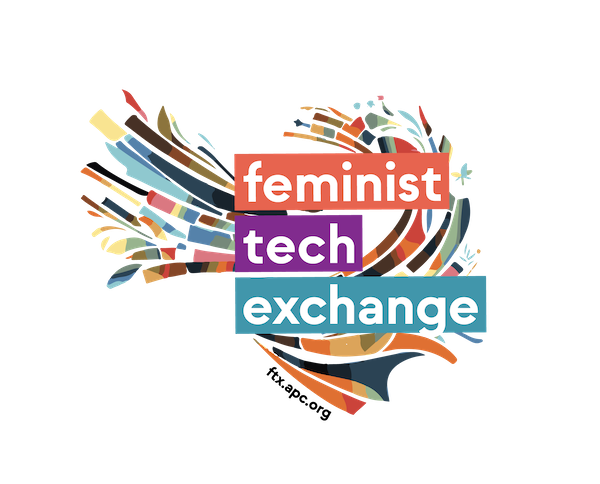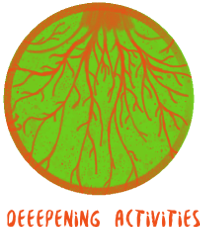Social movements: What’s in a tool? What’s in a space? [Deepening Activity]
Note: This is from the Movement Building module that the APC WRP developed.
Activity 1: What's in a tool? (- 15 mins)minutes
Participants are asked to think of their favourite tool. This can be a pen, a knife, a blender, anything. Have them write it down. Ask them 2 questions:
- Who do you think the tool is made for?
- What do you think it's designed for?
Facilitators Guide
Draw out the idea that tools are designed with values embedded within them. They are not neutral, and that the design to some extent, affects/directs its utility.
Similarly, the tools that we use online, is designed with an end-user in mind. They can be gendered, heteronormative etc. Use some examples to draw this out. For example, dating sites are usually designed for heteronormative couples (also porn sites are designed for the male gaze), FB took a long time to allow for genders other than women and men to be included.
Open up a discussion to find participants' examples of how they see technology design as being embedded with values and assumptions, and how they may affect its utility.
Activity 2: What's in a space?
Resources needed
open space, quarter slips of paper and markers to write tool down.
Time required
45 minutes
Mechanics
Ask participants to remember their tools. Give them a challenge that they would have to solve:
- The room only allows people who are 6 feet and above to move around.
- You can only have a say if you have a chair, but you can only sit on a chair if you have a dog.
- The door to the room is 4 feet tall
Ask them to find others and work together. Think of how they can use their tools in creative ways for which the tool is not designed and collectively solve this problem. They can think out of the box, be as outrageous as possible. Share their solutions.
Hold a discussion on their thoughts about the exercise:
- How were you able to change the use of your tools? Did this transform its embedded assumptions and values?
- How were you able to change the rules/structure by working together?
- What did this tell us about transforming power? Our own, as well as power structures in the space we occupy?
Close the discussion with a brief input. Giving the #FBrape campaign as an example.
The Day the Everyday Sexism Project Won and Facebook Changed
Facilitators guide
In the discussion, make the connection between how the tool, the space and their actions connect and affect each other.
Talk about how the way a room is structured affects how we interact with each other. How the tables and chairs are placed together. Are they nailed to the floor? How much freedom can we have to move things around? Importantly, move from the idea of the internet as a tool to a space that also regulates our ability to interact with each other. That the design of this space also has particular assumptions embedded within them. E.g. that it's for a lecturer speaking to a classroom, or a workshop kind of space where you can move around more.
In other words, internet tools and platforms are not inert tools that we hold in our hands, but also a space that affects and structures our interactions.
Talk about how the internet is a space with many spaces within them. Like land where people build houses, but fantastical houses that shape-shift depending on how we occupy the space.
Also bring in the idea of different kinds of ways to access the houses. Some people only can enter through a small window (mobiles), and how this restricts to some extent your ability to move around in the house, what you can do to change it.
However, the more well resourced the house, the stronger it is. Harder to break the infrastructure. Like Facebook – harder to negotiate its values and how it is built, although not impossible. Bring the example of the #Fbrape campaign.
The #Fbrape campaign: details. Managed to change the policy of FB to look at rape pages more carefully. How this also had a knock-on effect on Twitter, and the norms that makes other house-builders/platform builders change the logic/values of house-building
Lesson
Users can change the norms and values of a space online. Norms and values that affects and regulates our interaction.
This exercise is useful to orient participants into positive thinking of the internet as a space of activism and action, rather than a space of aggression and a reactive feminist response.
Resources needed
flipchart paper, markers and masking tape
Time required
60 minutes: 15 mins for the 1st activity, 20 minutes of group discussion, 10 minutes of gallery walk, and 15 minutes of plenary discussion.
Mechanics
Ask the participants to reflect on one tool that they use for activism by processing these questions:
- What do you think this tool is for and how have you appropriated it for activism?
- Why have you appropriated this tool and not another one that is similar?
Divide the room into pairs (or groups of 4 depending on size of workshop). Decide on the movement/struggle that they are currently part of, or identify one significant and recent social movement in their own contexts.
Draw a mindmap of this movement and the different components. Ask: How has the internet transformed power relations in the following components:
- Individual power (How did it help to strengthen individual power. How did it allow new kinds of subjectivities to be recognised and named? E.g. Dalit women, transpeople etc – allowing them to be recognised as political subjects)
- Power of the collective, the coming together (How did it enable people to gather, congregate, come together)
- Actions that can be taken (Was there a diversity of actions? How did the online and offline actions speak to and strengthen each other?)
- Political goal (How did it help to communicate the shared goal? What was the emotive motivation that enabled the coming together)
- Space (of occupying, of taking action, of claiming and renaming)
- Time (what was it responding to, is it a sustained or an immediate thing? How long did it last?)
Participants walk around the gallery of the mindmaps.
Hold a plenary discussion to close this activity:
- How has the internet helped to transform power relations in the movement? See the brackets in the questions above as ways of prompting.
- How is it different from ways of organising before?
- How can we, as feminists/women's rights activists engage with the internet more as a political space?


